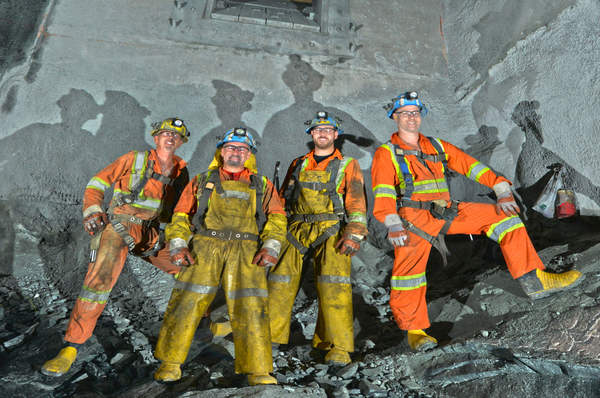Company wins gold in mining and natural resources category of Canada's Safest Employers awards

At Cementation Canada, more isn’t necessarily the answer. More checklists, more permits and more paperwork can cause complacency to kick in, says Steve Wrixon, general manager of health and safety at the underground mining company in North Bay, Ont. Alternatively, more emphasis needs to be put on quality.
“We are focusing on the quality of leading indicators we perform — our job observations, field inspections, audits, things of that nature — along with that comes a lot of coaching,” says Wrixon. “We’re educating our supervisors on why we’re doing these things, the best way to do them, what to look for, and an important element too is the followup when we find deficiencies.”
The focus on quality is a part of Cementation’s five-year safety strategy, which was rolled out earlier this year. Previously, the concept of “strategy” was always applied to business — not to safety within the business, says Roy Slack, president of Cementation Canada. The five-year plan aims to improve the 700-employee company’s internal responsibility system and lower injury frequencies.
To increase leadership visibility, the plan requires that all area managers conduct a thorough safety audit at each of their projects over the course of the year. The audit examines compliance to the safety management system and also looks for hazards that are specific to the project.
Cementation is in the process of implementing a new program called major accident prevention, which aims to eliminate all incidents that have the potential to cause irreversible harm or a workplace fatality.
“Depending on the scope of the work, it might be three, it could be 10 and based on that, they’re going to develop a list of critical controls that we feel if they are in place consistently, will prevent that major accident or critical or fatal injury from taking place,” says Wrixon.
Project supervisors are required to complete verification check sheets at set intervals — some daily, others weekly — to ensure those critical controls are in place.
When Cementation starts up a new project, workers are always excited to get their boots on the ground, but a preparedness audit needs to be conducted first. The audit tools are shaped based on the type of project, whether it be shaft sinking, underground construction or lateral development. It looks at the project as a whole, including safety, engineering, human resources, training, equipment and contractual elements.
“It’s pretty extensive but all of these things are intertwined,” says Slack. “Take HR for example. If you don’t have some of the people you planned to have in place, that means the other people have extra workload. Are they getting everything done? It all relates to safety somehow. Even if things on the surface don’t appear to be strictly safety related, if you aren’t prepared properly for your project, that can impact safety.”
When a worker is injured on the job and cannot get back to his full duties, Cementation works hard to provide meaningful modified work for that individual, says Wrixon. He notes that this arrangement benefits the employee because he is not losing wages and his morale and mental health improve.
“In most cases, we go beyond our duty to accommodate and we do everything we can to find work for that employee and get them back to work as quickly as possible,” says Slack. “It’s the type of program where we don’t want to have anyone in it, but if we do have people in it, we want to get them out of it as soon as possible.”
This article originally appeared in the October/November 2017 issue of COS.





